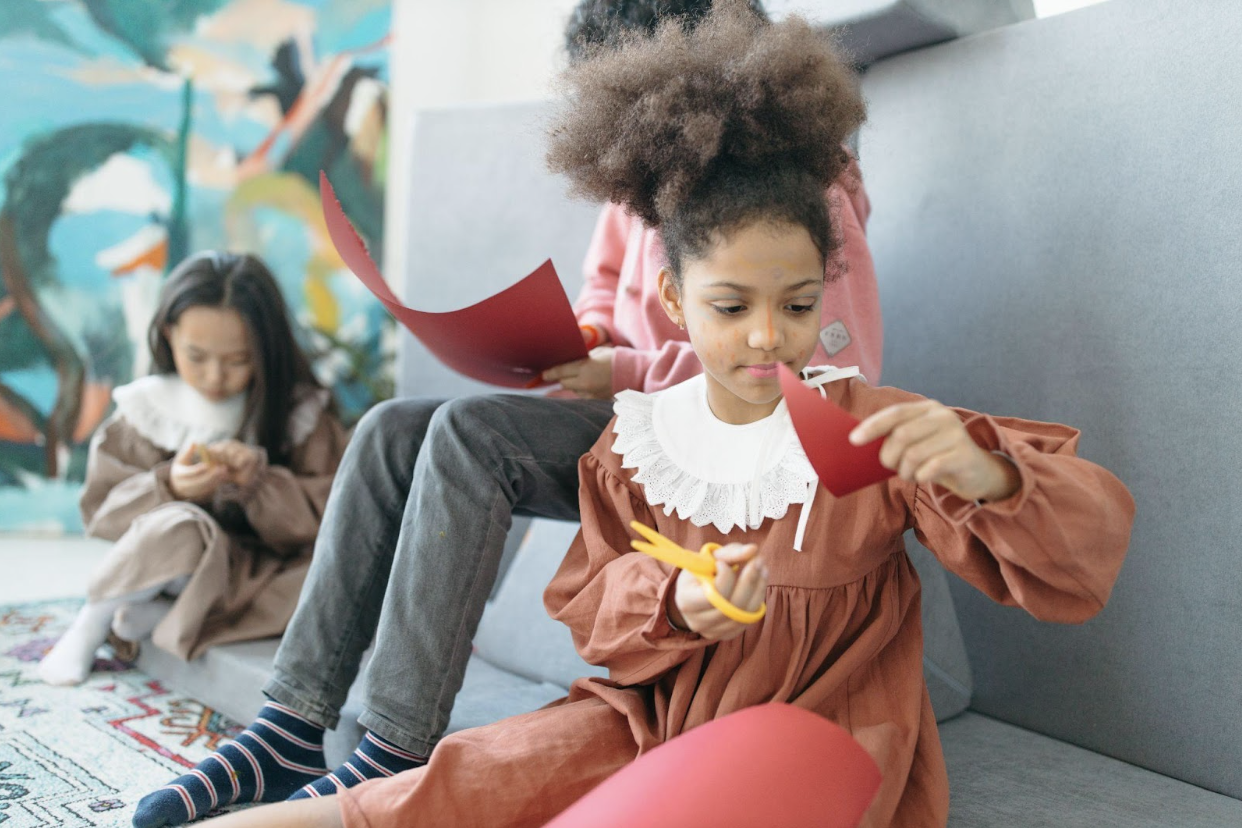
What Is Creativity?
Before we get started, it helps to define Montessori education for creativity and Montessori education for independence.
A creative child is one who can generate new ideas to solve problems. This is a child who thinks outside the box and is willing to try new solutions.
What Is Independence?
An independent Montessori child is a self-starter who knows when they can solve a problem on their own, and when to ask for help. An independent child explores their environment and feels confident to navigate the world.
Fostering Independence and Creativity
Here are five ways a Montessori classroom focuses on the independence and creativity of a child:
1. Through creative investigation
Traditional subjects are a major part of the curricula at a Montessori school, but the way the subjects are approached is much different than what you may be used to.
Instead of rote memorization and repetition, the Montessori child is encouraged to be curious and creative with the way they think. Montessori encourages independent research, group activities, and full classroom activities that spark curiosity about the subject and entice the student to find out more.
This creative approach to investigation inspires confident students to learn more about the information they’re presented with instead of simply accepting it at face value.
2. Through observant instructors
Guides pay close attention to each and every child in the classroom, getting to know their unique learning styles and habits. Guides understand the strong suits and weak spots of each child, and they remain flexible to the needs of each child.
Such a relationship between teacher and student allows students to feel safe to explore, fostering creativity and independence at once. They know they will be supported in their endeavors, so they are free to think (and work) outside the box.
3. Through making mistakes
The Montessori classroom is a safe space to take risks. Instead of being punished, mistakes are encouraged—because after all, they are the greatest learning tool. Once children realize the classroom is a safe place to mess up, they are more likely to lean into their creative side and rely on independent thinking to explore something until they get it right.
4. Through leadership
The Montessori model promotes multi-age classrooms that lend themselves to the development of leadership skills. Older children lead the younger ones, serving as mentors and role models for them.
Such a role encourages the feeling of independence for both age groups—the older children know they are being depended on, and they are confident enough to take on the role. The younger children know they can reach out to their peers for guidance instead of always relying on the teacher. Encouraging children to depend on one another strengthens the concept of community in the classroom.
5. Through internal motivation
Instead of offering external rewards in our classrooms, we want children to rely on internal motivation to do well. Children have freedom within limits—they can choose their own work, the order they do the work in, and who they work with. This empowers them to make decisions, which empowers their learning journey, which then frees up their minds and fosters creative thinking.
Creativity and Independence in the Classroom
At Austin Children’s Academy, we’re proud of the independent and creative students that we teach, from infanthood to six years old. To learn more about our school, schedule a tour with us today!





















